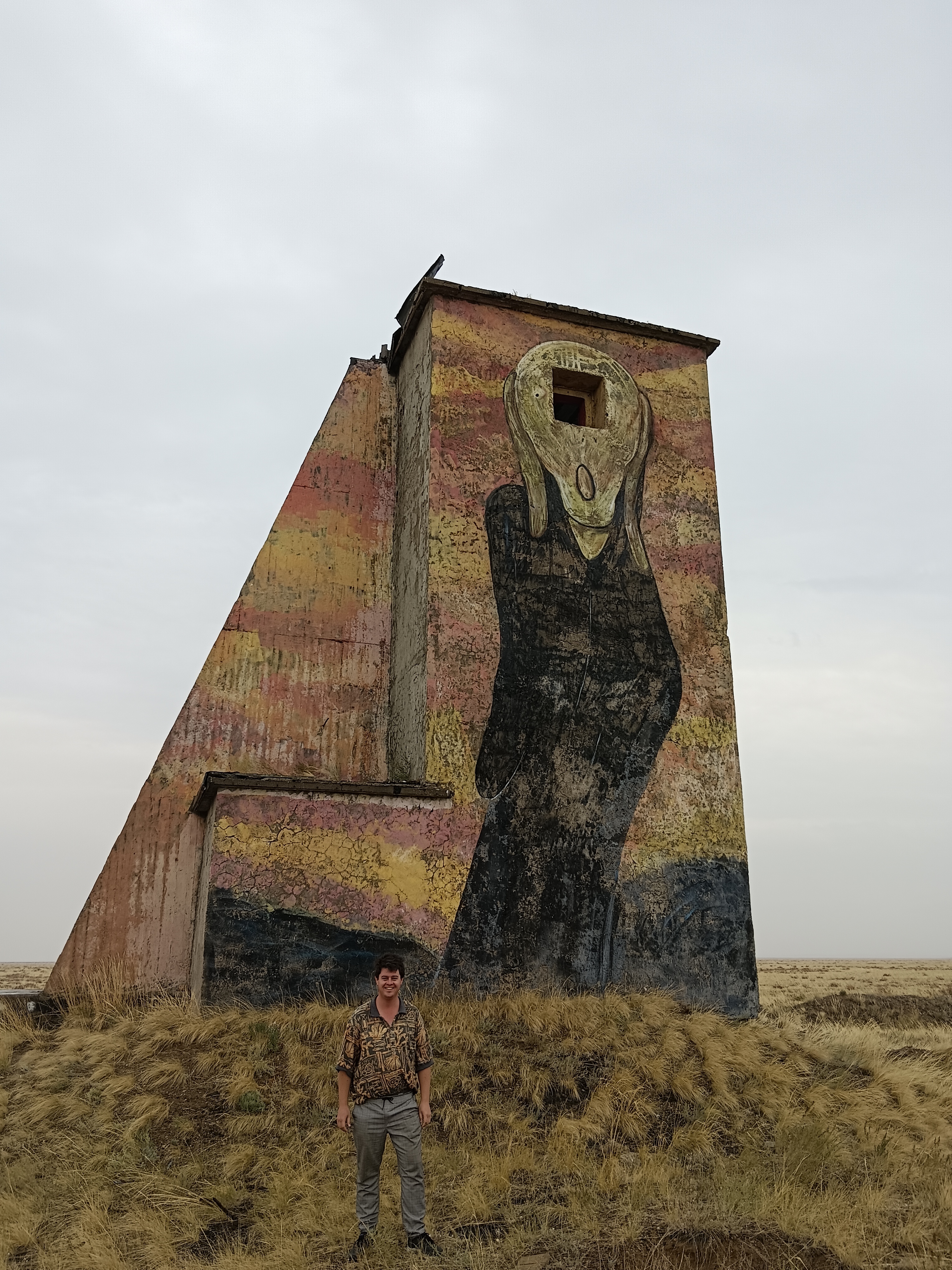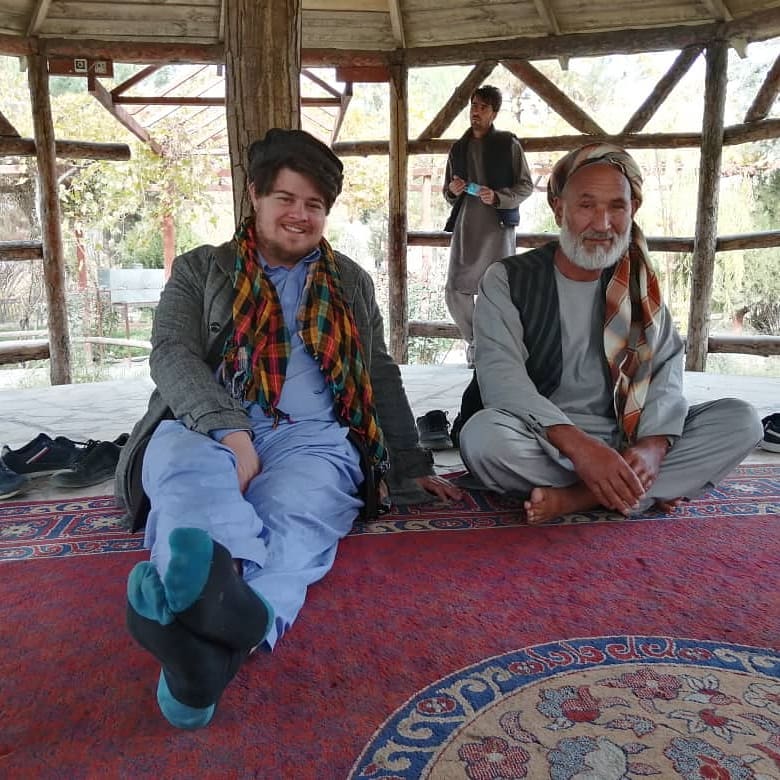The Polygon, more formally known as the Semipalatinsk Nuclear Test Site, is a difficult experience

For more detailed information on what the Polygon is, click here.
This part of Kazakhstan is huge, and the nuclear test site is larger than many European countries, so it’s an early rise from our hotel in Semey in order to hit the road. Starting on major intercity highways, it’s then turn after turn, until we’re eventually driving on dirt roads. We could see why this

We finally get to the edge of the nuclear test site, no one quite sure what to expect. A large welcome sign? Maybe one of those tacky ‘I Love (insert place name)’ signs? But of course

Driving through the nuclear test site was an eerie experience. The weather had gotten very grey and bleak with a whistling wind to add to the aura of a dystopian wasteland. Our first stop was the famous Atomic Lake, formally called Lake Chagan. In order to create a large lake to use for irrigation, a 20 megaton nuclear bomb was detonated here. Of course, no one wants nuclear water being used on their fruit and vegetables, so it now stands alone here. Some people choose to swim here and some locals even fish in the lake, however we decided to keep our protective gear on. The radiation coming from the shores of the lake were roughly 2 to 3 times safe levels. Our 2 day long exposure to large doses of radiation had begun.

After roughly 40 minutes at

That night we headed to Kurchatov, the main town serving this area. You could tell that this was a grand town, built for the best and brightest scientists and engineers the world had seen. You could also tell that 90% of the population had left. After the end of nuclear testing, there wasn’t much else for them to do. Those who stayed behind were disproportionately ethnically Russian, something that’s unusual these days in Kazakhstan. The hotel was a classic Soviet affair, and hadn’t changed its décor since the 1970s.

Waking up to a nourishing bowl of porridge and a boiled egg, it was time for another day of exploring, this time to the site where the majority of tests had been conducted. This also happens to be the most radiative, which our Geiger counter made very clear, showing that the radiation levels were 20 times the safe amount. It was only when we got back on the bus after

This was a weird place, with dozens of large concrete barriers surrounding the formerly flat earth, now scarred by the hundreds of tests. Several of the craters had filled up with water and some flowers had grown next to them. The desolate nature of the place could be beautiful if it weren’t for the sound of the Geiger counter reaching higher and higher levels and the large testing structures surrounding the main test site. Around the main test site are also an array of differently styled bunkers, a nuclear reactor, road and rail bridges and even an underground metro station! They were all built to study the effects that nuclear explosions had on different infrastructure.

Even though we didn’t come across anyone else while we were there, there were signs of others being in the area. You could see the signs of young people who had taken the risk to put up some graffiti. Apparently, some truck drivers take a short cut through the test site in order to cut 500km off their drive, risking the radiation. The locals who live within the test site carry on their life as normal, some even claim the radiation is good for them, but this is no doubt just a defence mechanism.
After leaving one of the strangest places you could ever imagine travelling to behind us, we slowly made our way back to Semey. There were small stops to make along the way, but our minds had definitely been left behind at the test site, still trying to process everything we had seen.
If you're interested in visiting the Polygon with us, check out all our upcoming tours.



